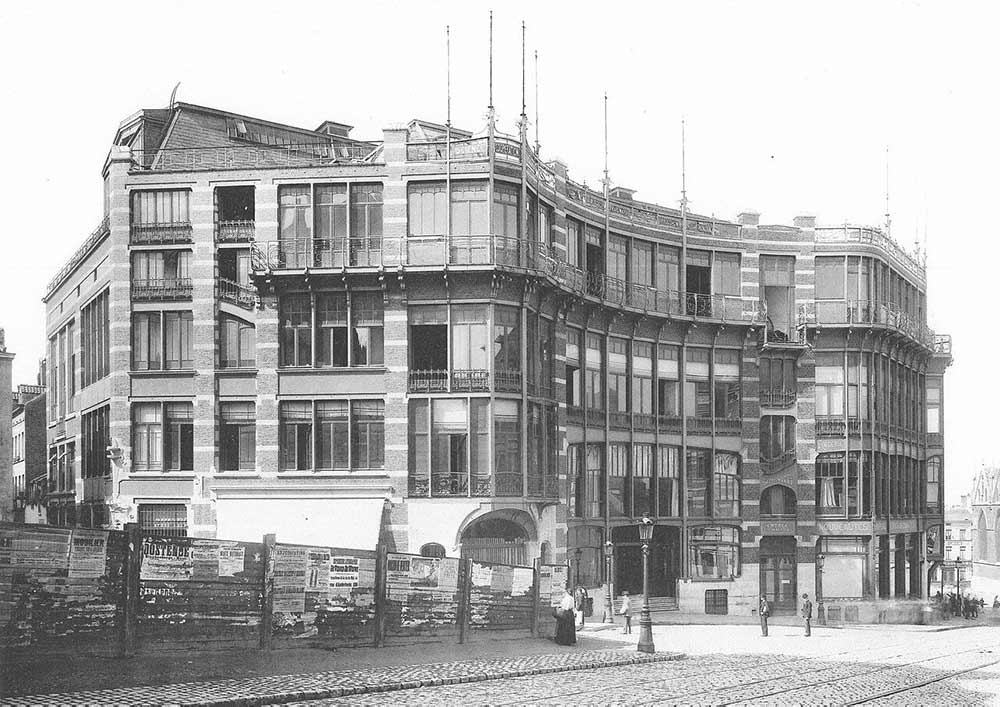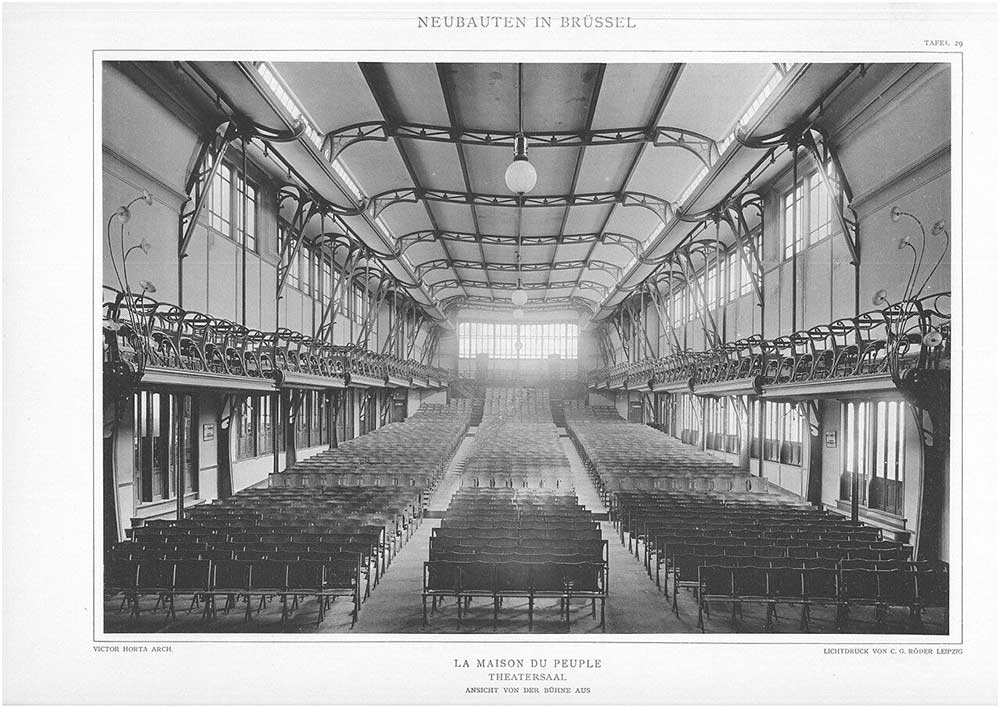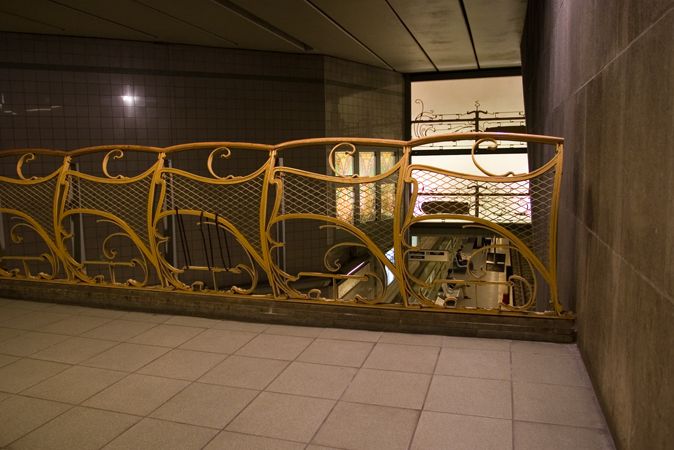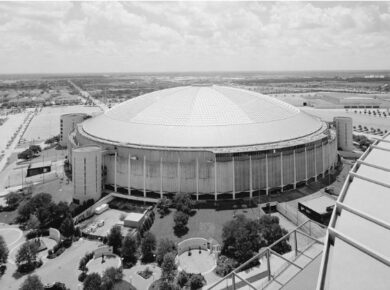Official opening of Victor Horta’s Volkshuis on April 1, 1899.
On Place Emile Vandervelde in Brussels, it is a fruitless search for the Volkshuis, an Art Nouveau cathedral built by architect Victor Horta in the late 19th century for the young socialist party. The workers’ party saw in Victor Horta the perfect person to design the Volkshuis. With his art nouveau mansions, he had created a style break with the past, something that appealed to the socialists.

Photo: Public Domain
Victor Horta wanted to build a palace for the workers, a cathedral with plenty of light and air. The facade of the People’s House, which followed the curve of the square, was a tangle of stained-glass windows, iron trusses, balconies and flagpoles. All the ironwork was painted bright red. The handles, railings and balustrades inside were finished one by one with so-called whip lines, the typical decorative form of Art Nouveau. All around the ballroom, vast terraces afforded visitors an unforgettable view of Brussels.

Photo: Public Domain
Everyone satisfied? Yet not. The Socialist Party, which kept growing, soon found the building too small. As early as 1911, they began filling the terraces with additional offices. The red colours were painted in a neutral shade of grey. Horta watched it with sorrow and felt the pinch: ‘If, like other of my works, it were to be demolished, it would not surprise me,’ he writes in his memoirs.

Photo: Lin Mei (RightIndex @ flickr) / CC-BY-2.0
Demolition began in 1965 and by 1966 the Volkshuis had disappeared for good. The Association of Belgian Art Critics called the demolition sacrilege. Socialist politician Camille Huysmans, wasn’t impressed: ‘Horta is not worthy of our attention. The Volkshuis is a lamentable construction’ (sic). How bad was that? ‘By having Horta’s Volkshuis destroyed, Belgium destroyed its Eiffel Tower, its Statue of Liberty, its Mermaid, its Sagrada Familia…’, writes Michèle Goslar in her biography of Victor Horta.
The iron trusses from the ballroom moved to Antwerp in 1993, where in 2000 they were incorporated as decor in the café and ballroom of the Grand Café Horta. In the Brussels pre-metro station Horta, balustrades from the ballroom can be seen.
About the Author:

Bruno Dursin – Managing Director at Believe in Steel. Bruno has more than 30 years of experience in promoting steel & steel solutions. His clients benefit from his extensive network within the building industry.



